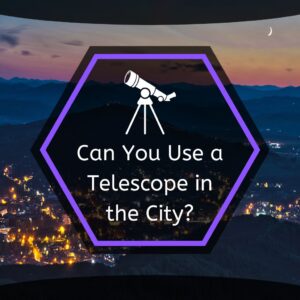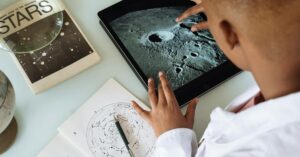This site contains affiliate links to products. I may receive a commission for purchases made through these links.
I’ve always been fascinated by the vastness of space. It’s a topic that sparks curiosity in young minds, especially those in kindergarten. This is why I believe it’s essential to introduce space activities in early learning.
From creating cardboard rockets to exploring the planets, there’s a universe of fun waiting for our little astronauts. These activities not only inspire creativity but also lay a solid foundation for future scientific learning.
So, let’s blast off into a world of fun and knowledge. Stay tuned as I share some of the best space activities for kindergarten that’ll keep your kids engaged while they learn about the wonders of the universe.
Why Teach Space Activities in Kindergarten?
Have you ever asked the question, “Why is it important to introduce space activities in Kindergarten?” I’ve come across this query many times, and it’s always a pleasure to shed some light on the matter.
Bringing space activities into a kindergarten setting isn’t just about teaching children the names of planets or how a rocket flies. It’s about building a foundation for analytical thinking, encouraging exploration, and nurturing a budding curiosity about the world beyond our own.
In my experiences, I’ve noticed how these lessons can have a profound impact on young minds. For instance, space activities push a child’s imagination to its absolute limit. There must be something about an environment filled with stars and celestial bodies that allows a child to explore their thought boundaries and delve into creative thinking with gusto. Often I’ve found that this hands-on, exciting approach to science inspires a love for learning that textbooks alone might not bring out.
Another striking benefit is the enhancement of problem-solving skills. Space-related tasks, such as crafting a cardboard telescope or plotting constellations, help children understand basic principles of design, planning, and execution. They learn to strategize, adapt, and innovate—all vital skills in today’s fast-paced world.
Finally, let’s not underestimate the value of space activities in teaching children about the vastness of the universe. It’s a humbling exercise that causes them to ponder about galaxies far away and their place in that vast cosmos. The lessons in humility, empathy, and respect for all life are priceless.
Now that we’ve addressed the whys behind space activities in kindergarten let’s set our sights on the various activities that are sure to make learning about space an adventurous journey for your little astronauts.
| Benefits of Space Activities in Kindergarten |
|---|
| Boosts Analytical Thinking |
| Enhances Problem-Solving Skills |
| Cultivates a Love for Science |
| Teaches Humility and Empathy |
Benefits of Space Activities for Kindergarten Children
Space activities aren’t just about exploring the universe beyond our planet. They’re about cultivating critical thinking, inspiring creativity, and nurturing a lifelong passion for learning.
Firstly, when children start learning about space, it fosters analytical thinking. Children begin to visualize the universe as a vast entity full of celestial bodies, each with its own unique path and purpose. This helps them understand patterns, predict outcomes, and establish a concrete foundation for analytical thinking. I can remember my first encounters with space and how it opened my mind to a myriad of possibilities.
Secondly, the boundless nature of space lights a spark of creativity in young minds. By imagining life on other planets or designing a rocket to explore outer space, kids think beyond what they physically see. This kind of imaginative play builds creative skills that they’ll find useful in a variety of future endeavors.
Space activities also promote problem-solving skills. Constructing spacecraft models or navigating a Lunar Rover maze requires children to overcome challenges. This hands-on experience instills valuable problem-solving tactics, fostering resilience and adaptability.
Curiosity is another inherent advantage of space activities. The vast universe is filled with mysteries that can pique children’s interest and encourage them to ask questions. This curiosity, once ignited, can lead to a love for science and discovery.
One underrated attribute of space activities is how they instill humility and empathy. Looking at the colossal universe can make one realize their insignificance in the larger scheme of things, fostering humility. It also allows children to appreciate the uniqueness of our planet, encouraging a compassionate regard for Earth and its inhabitants.
- Space activities foster analytical thinking.
- They inspire creativity and nurture a love for science.
- These activities enhance problem-solving skills.
- Space studies teach humility and empathy.
No matter how we look at it, the benefits of space activities for kindergarten children are far-reaching, changing how they perceive the world around and beyond them. So let’s take a closer look at these activities and how they can be incorporated into a kindergarten curriculum.
Introduction to the Solar System
As we dive deeper into space activities for kindergarten kids, it’s time to introduce them to the marvels of our solar system. It’s an arena filled with thrilling discoveries for curious young minds.
Seeing the big picture of our cosmic neighborhood, the solar system, kick starts an understanding of the larger world that these children are part of. As I introduce the solar system to kids, I focus on making it fun and interactive. To introduce them to the sun, the planets and their unique facts is to open a totally new realm of learning.
We start with the Sun, our bright and powerful star. It’s not just a light source but a giant celestial body fueling life on our planet. Methods to illustrate this include games, visuals, and informative sessions. To be clear, we don’t promote sun gazing – safety comes first!
Next, we have 8 diverse planets. They orbit the sun and each possesses its own unique characteristics. I enjoy using models, colorful charts, and stories to depict facts about each planet. It’s particularly fun when you associate each planet with a character trait, like the speedy Mercury, the bright Venus, our home Earth, and so on.
For example:
| Planet | Characteristic |
|---|---|
| Mercury | Speedy |
| Venus | Bright |
| Earth | Home |
| Mars | Red |
Remember these space activities are not about facts and figures overload. It’s crucial to make them child-friendly. We focus on awakening their interest and curiosity about celestial bodies. Our amazing solar system is not just an astronomical unit of classroom lessons, but also a fantasy land that sparks imagination and perspective in kindergarten kids. The introduction to the solar system is just the doorway to unlock this vast fascinating universe for youngsters.
Planet Exploration Activities
As children embark on their journey with the Planet Exploration Activities, they’re stepping into an exciting world filled with imagination and learning. These activities are more than just games; they’re instrumental in teaching our little explorers about the solar system and beyond.
One of the fascinating ways to introduce kids to our solar system is through role-plays. Let them take on the roles of different planets, which facilitates deeper learning and understanding. Role-playing not only stimulates their curiosity but also helps them relate to the planets on a personal level.
Melting ice planets is another engaging activity. Freeze small planet models in ice, and let the kids melt it using warm water. This experiment combines basic science with planet learning, teaching them about states of matter while exciting them about our solar system.
Another highly engaging activity is creating Planet Memory Cards. Use these cards to match planet facts with their respective celestial bodies. It’s a great memory game that also doubles as an educational tool, helping children to remember facts about each planet.
We’ve also seen a lot of success using Planet Sorting Mats. Let the kids play a game where they’ll have to sort images, or facts into the correct planet section on the mat. It’s a perfect mixture of fun and learning while they get familiar with the characteristics of each planet.
It’s essential to clarify that all these activities should include mixing fun with learning. This way, kids won’t even realize they’re learning – they’ll think they’re just having fun.
Let’s talk about resources for these activities. Kids love hands-on stuff. Colorful planet pictures, planet models, memory cards and songs about the solar system would be just the perfect combination to make these activities successful.
Remember, the idea behind these exploration activities is not just teaching, it’s about igniting a spark, a fascination for the solar system that’ll last lifelong. It’s about taking their tiny hands and showing them the way to the stars and beyond.
Building and Launching Rockets
Building and launching rockets can be an exhilarating activity for kindergarten kids. It’s an engaging way to get their hands dirty while piquing their curiosity about space technology. What’s more, rockets introduce young minds to basic concepts of physics in a way they will never forget.
Don’t worry, these won’t be actual, combustible rockets but safe, and easy-to-build versions. With materials like plastic film canisters and baking soda, the fun kicks off right at the crafting table!
Materials Required
Here’s what we’ll need:
- Empty film canisters with lids
- Alka-seltzer tablets (or baking soda and vinegar)
- Safety goggles
Please Note: These materials are safe for a kindergarten setting, plus children must always be supervised while performing the activity.
Once materials are collected, it’s time to dive into the project. The first step requires filling the film canister half-way with warm water—something kids can easily do. Then, depending on preference, break the alka-seltzer tablet into a few pieces and drop it in, or alternatively, mix baking soda with a bit of vinegar. The film canister is immediately closed tightly. Then comes the exciting part—launching!
I’ve prepared a simple table showcasing the step-by-step guide to follow:
| Steps | Instruction |
|---|---|
| 1 | Gather all the materials |
| 2 | Fill the canister half with warm water |
| 3 | Break an alka-seltzer tablet and drop it or mix baking soda with vinegar |
| 4 | Close the canister tightly |
| 5 | Stand back and launch |
Building and launching rockets also comes with a learning curve. From the initial fizzling sound on the launching pad to the final “whoosh” of the rocket, children will constantly question and be keen to understand the science behind it. Particularly, it is a great opportunity to explain the role of gases, pressure, and the release of energy.
Conclusion
So, there you have it. I’ve given you a glimpse into the world of space activities for kindergarten kids. It’s all about sparking curiosity and instilling a love for the vast universe. From role-playing to building rockets, these activities are designed to make learning about the solar system enjoyable and memorable. Remember, it’s not just about teaching facts – it’s about fostering a sense of wonder, using creativity and imagination. With these activities, we’re not just educating, we’re inspiring future astronomers, astronauts, and scientists. Here’s to a generation of children who’ll look up at the night sky with fascination and a thirst for knowledge, thanks to the fun, engaging space activities we introduce them to in kindergarten.
What is the main focus of this article?
The article primarily focuses on ways to introduce kindergarten children to the solar system through fun, interactive, and engaging activities such as games, visuals, melting ice planets, creating planet memory cards, and using planet sorting mats.
Why does the author suggest associating each planet with a character trait?
This is to make learning about the solar system more relatable and engaging for kindergarten children. It could help them remember the planets and spark their curiosity about space.
What resources does the author recommend for these activities?
The author suggests using colorful planet pictures, planet models, memory cards, and songs about the solar system. These resources are engaging, fun, and support the learning process.
What is the goal of these space activities for children?
The goal of these activities is to ignite a lifelong fascination with the solar system and beyond in young children, and to combine learning with enjoyment.
The article also introduces an activity related to rockets. Can you explain more?
Yes, the article provides a guide to building and launching rockets, using safe materials. This activity is designed to introduce children to basic physics concepts and engage them in space technology.




